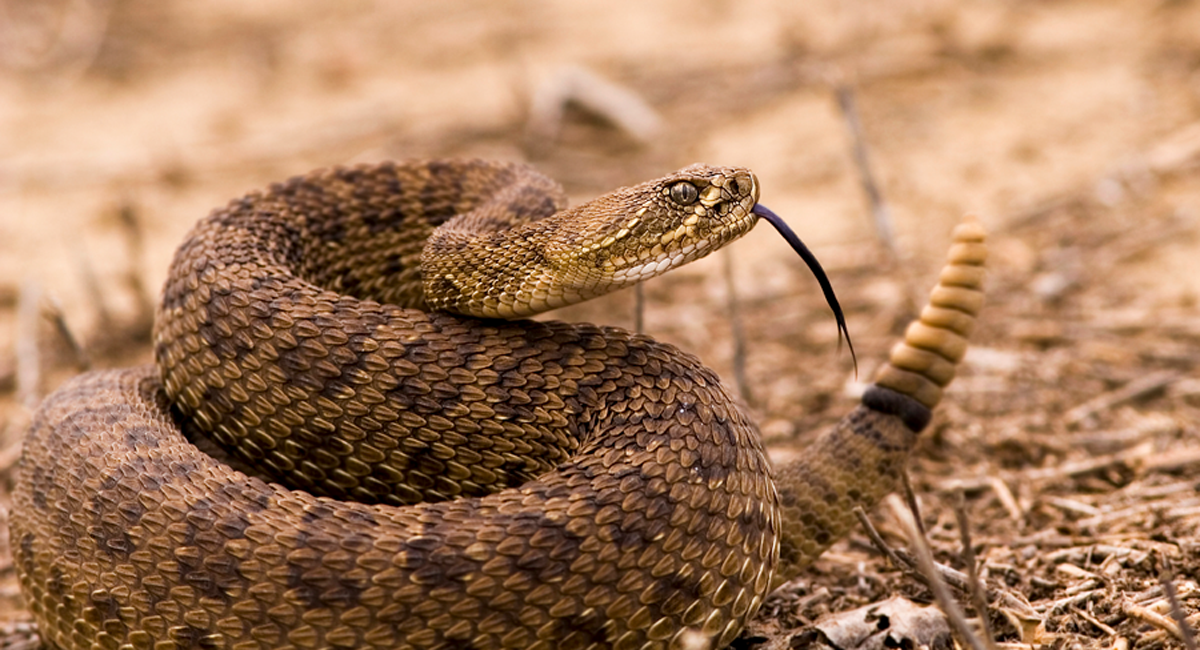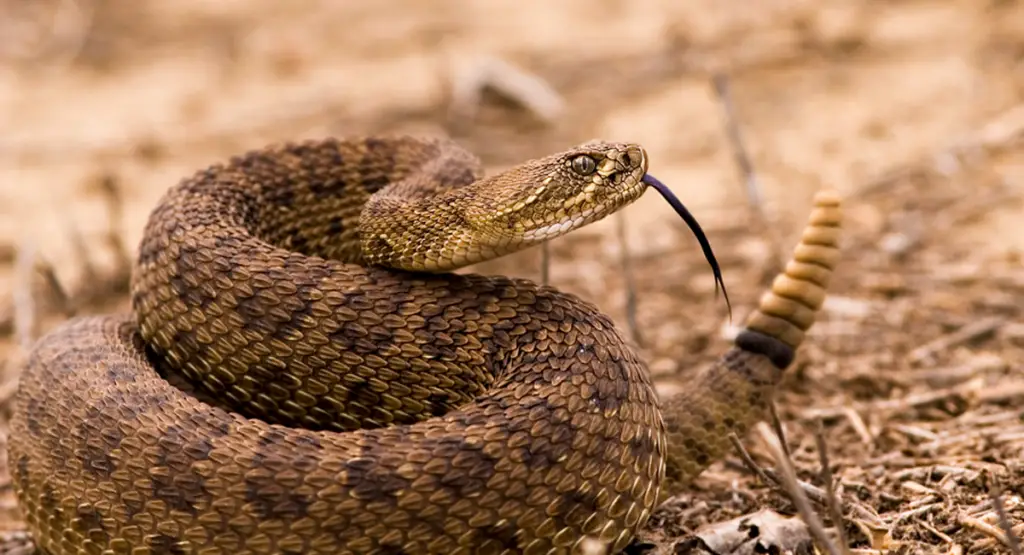Rattlesnakes are venomous snakes that can be found in many parts of the world, including North America. If you are bitten by a rattlesnake, it can be a very scary experience. However, it is important to stay calm and know what to do in order to increase your chances of survival.
The first thing you should do if you are bitten by a rattlesnake is to seek medical attention immediately. Call 911 or go to the nearest emergency room as soon as possible. Time is of the essence when it comes to treating a snake bite, so don’t wait to see if symptoms appear before getting help.
If bitten by a rattlesnake, seek medical attention immediately. Keep the affected body part immobilized and lower than your heart level. Do not suck out the venom or apply ice or a tourniquet. Try to remember the snake’s color and shape, which will help in treatment.

What to Do if Bitten by a Rattlesnake?
Rattlesnakes are venomous snakes that can cause serious injury or even death if not treated immediately. If you’re hiking or exploring areas where rattlesnakes are common, it’s important to know what to do in case you are bitten. Here’s what you need to know:
Stay Calm and Call for Help
The first thing you should do if you’re bitten by a rattlesnake is to stay calm. Panicking will only elevate your heart rate, which can spread the venom quicker throughout your body. Call for help immediately, either by using your phone or by yelling for someone nearby to come to your assistance.
While waiting for help to arrive, try to stay as still as possible. This will help slow down the spread of the venom and prevent it from reaching vital organs.
Remove Any Tight Clothing or Jewelry
If you’re wearing any tight clothing or jewelry around the bite area, remove them immediately. This will help prevent swelling and allow for better blood flow to the affected area.
Position Yourself Properly
If possible, position yourself so that the bite area is below the level of your heart. This will help slow down the spread of the venom and prevent it from reaching vital organs.
Do Not Suck Out the Venom
Contrary to popular belief, sucking out the venom with your mouth is not an effective treatment for rattlesnake bites. In fact, it can make the situation worse by introducing bacteria into the wound.
Do Not Apply a Tourniquet
Applying a tourniquet to the affected limb is also not recommended. This can cut off blood flow to the area, which can cause tissue damage and even lead to amputation.
Clean the Wound
Once you’ve called for help and positioned yourself properly, clean the wound with soap and water. This will help prevent infection and reduce the risk of complications.
Seek Medical Attention Immediately
Even if you’re feeling okay, it’s essential to seek medical attention immediately after a rattlesnake bite. The venom can cause serious complications, including tissue damage, organ failure, and even death.
Stay Hydrated
While waiting for help to arrive, drink plenty of water to stay hydrated. This will help keep your body functioning properly and reduce the risk of complications.
Do Not Take Painkillers
Avoid taking painkillers or any other medication without consulting a healthcare professional. Some medications can interact with the venom and make the situation worse.
Stay Away from Rattlesnakes
The best way to avoid getting bitten by a rattlesnake is to stay away from them. When hiking or exploring in areas where rattlesnakes are common, wear long pants and boots, and stay on marked trails. If you encounter a rattlesnake, give it plenty of space and wait for it to move away before continuing on your way.
In conclusion, if you’re bitten by a rattlesnake, it’s important to stay calm, call for help, and seek medical attention immediately. Remember to avoid sucking out the venom, applying a tourniquet, and taking painkillers without consulting a healthcare professional. By following these steps, you can reduce the risk of complications and ensure a speedy recovery.
Frequently Asked Questions
Rattlesnake bites can be dangerous, and prompt medical attention is crucial. Here are some common questions and answers about what to do if you are bitten by a rattlesnake.
What are the symptoms of a rattlesnake bite?
Common symptoms of a rattlesnake bite include pain, swelling, and redness around the bite area. Other symptoms may include nausea, vomiting, weakness, and difficulty breathing. If you experience any of these symptoms after being bitten by a rattlesnake, seek medical help immediately.
Rattlesnake venom can be fatal if left untreated. It is important to get medical care as soon as possible, even if you are not sure if the snake was venomous.
What should you do immediately after a rattlesnake bite?
If you are bitten by a rattlesnake, it is important to stay calm and call for medical help immediately. Do not try to remove the venom yourself, as this can cause further harm. Keep the affected area still and at or below heart level, and remove any tight clothing or jewelry that could impede blood flow.
Do not attempt to capture or kill the snake, as this can put yourself and others at risk. Instead, try to remember the snake’s appearance so medical professionals can identify the type of snake and administer the appropriate treatment.
What treatment will you receive for a rattlesnake bite?
The treatment for a rattlesnake bite will depend on the severity of the bite and the type of snake. In most cases, you will receive antivenom medication to counteract the venom. You may also receive pain medication, antibiotics to prevent infection, and tetanus shots if needed.
If the bite is severe, you may require hospitalization and additional treatment such as surgery to repair tissue damage. After being treated for a rattlesnake bite, it is important to follow your doctor’s instructions for proper wound care and watch for any signs of complications.
How can you prevent rattlesnake bites?
The best way to prevent rattlesnake bites is to avoid areas where they are known to live, such as rocky or wooded areas. If you must be in a rattlesnake habitat, wear protective clothing such as long pants and boots, and stay on designated trails. Do not attempt to handle or approach snakes, and keep your distance if you encounter one.
If you live in an area with rattlesnakes, take steps to make your property less attractive to them, such as removing debris and keeping your lawn mowed. You can also install snake-proof fencing around your property to keep snakes out.
Are there any natural remedies for rattlesnake bites?
There are no proven natural remedies for rattlesnake bites, and attempting to use them can be dangerous. Do not apply ice or heat to the bite, as this can cause tissue damage. Do not try to suck out the venom or cut the wound, as this can cause further harm.
It is important to seek medical help as soon as possible after a rattlesnake bite. Delaying treatment can lead to serious complications or even death. Trust in medical professionals to provide the appropriate treatment and care for a rattlesnake bite.
When Snakes Bite: Pre-Hospital Care
In conclusion, being bitten by a rattlesnake can be a terrifying experience, but it’s important to stay calm and act quickly. The first step is to call for emergency medical assistance immediately. While waiting for help to arrive, try to keep the bite area immobilized and below heart level.
It’s also important to remember not to try to suck out the venom or cut the bite area, as this can actually make the situation worse. Instead, focus on keeping the victim comfortable and still until medical help arrives.
Lastly, the best way to avoid getting bitten by a rattlesnake is to be aware of your surroundings when hiking or spending time outdoors. If you do come across a rattlesnake, give it plenty of space and avoid disturbing it. With these precautions in mind, you can enjoy the great outdoors while staying safe from rattlesnake bites.


